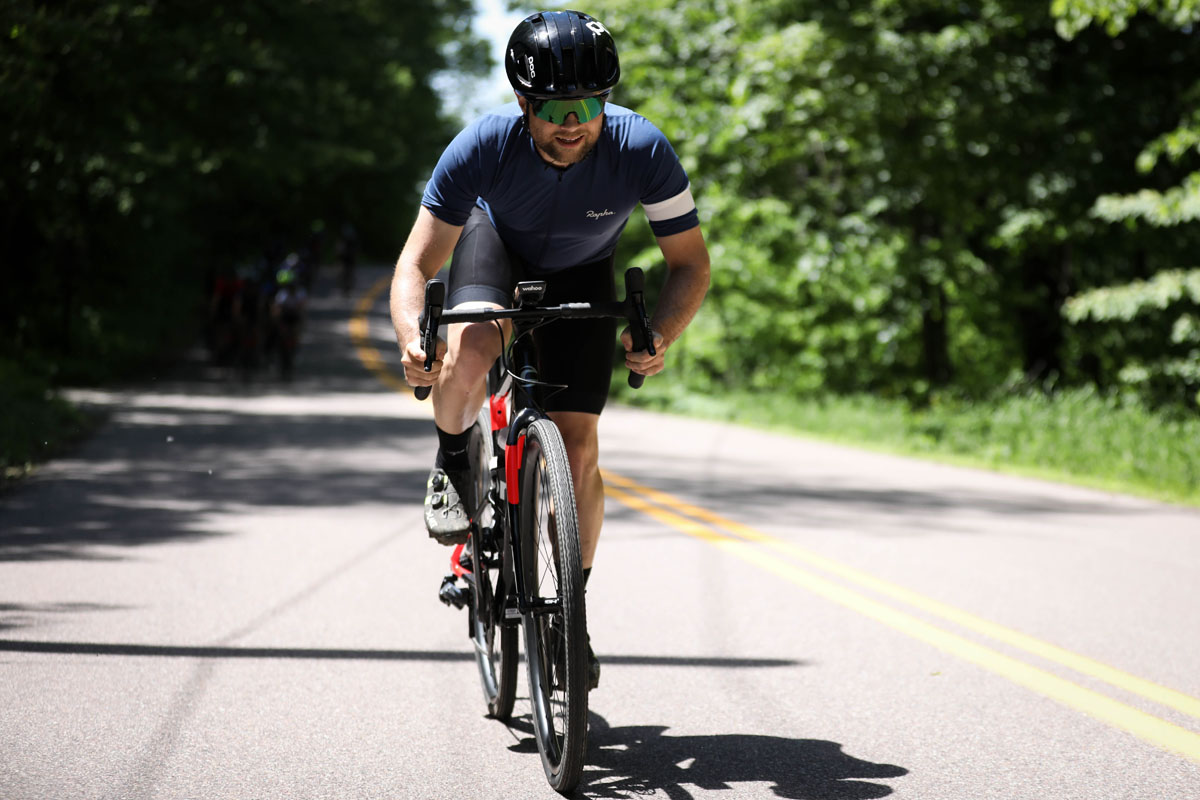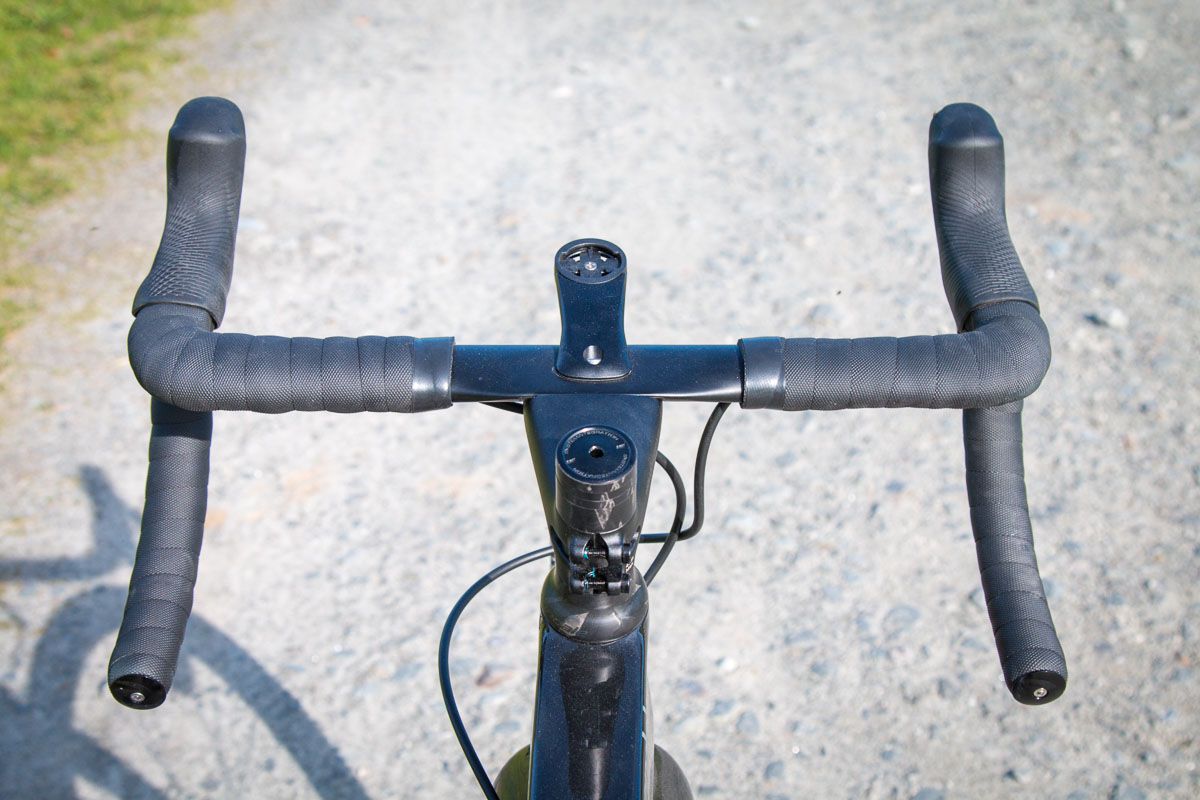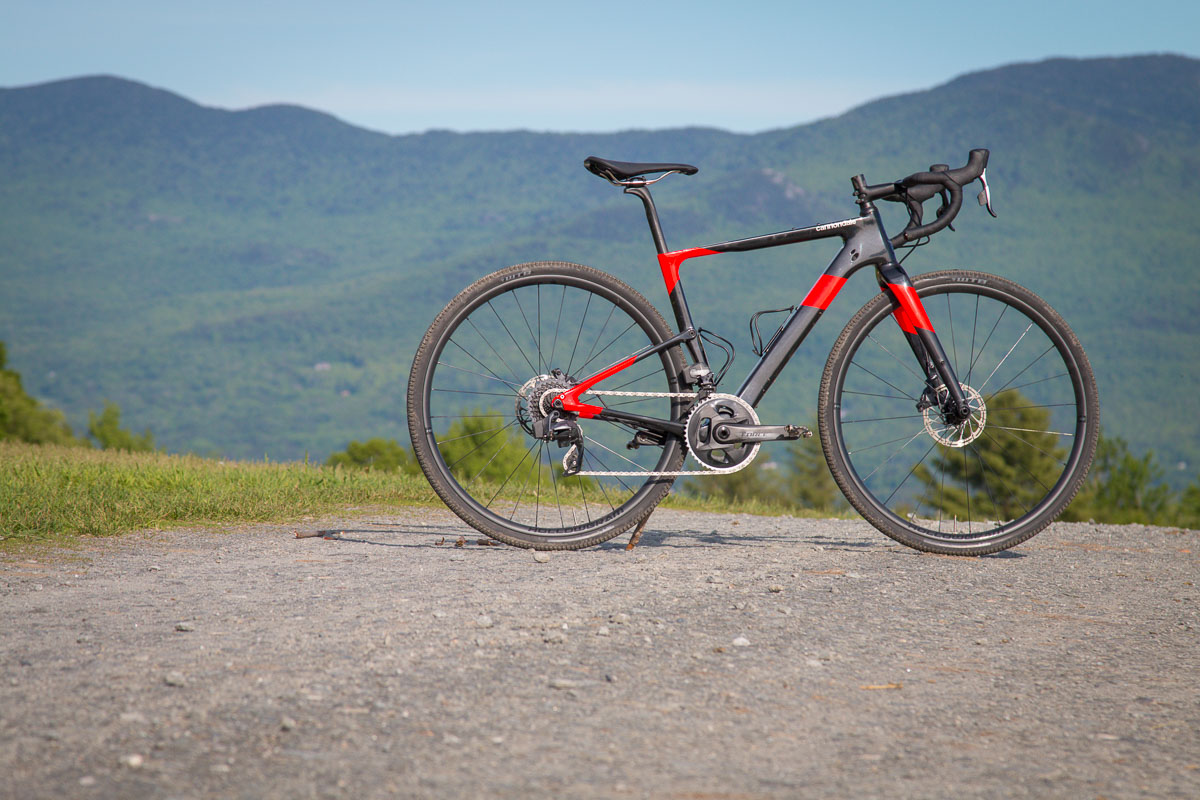Quick – if you were to put suspension on your gravel/all-road bike, where would it be? The front? The back? Both? That seems to be a popular question at the moment, and for good reason. The answer will have a profound effect on the way the bike rides. As we made our way to Vermont for the Cannondale launch, we knew that we would be seeing a new gravel bike. But until the presentation, what that bike would look like was anyone’s guess.

By now, you might have seen our first post on the all new Cannondale Topstone Carbon gravel bike. If not, following that link will get you up to speed on the technical details of the new frame. In a nutshell, the Topstone Carbon relies on suspension to provide a smoother ride – but only on the rear. And mostly when seated.
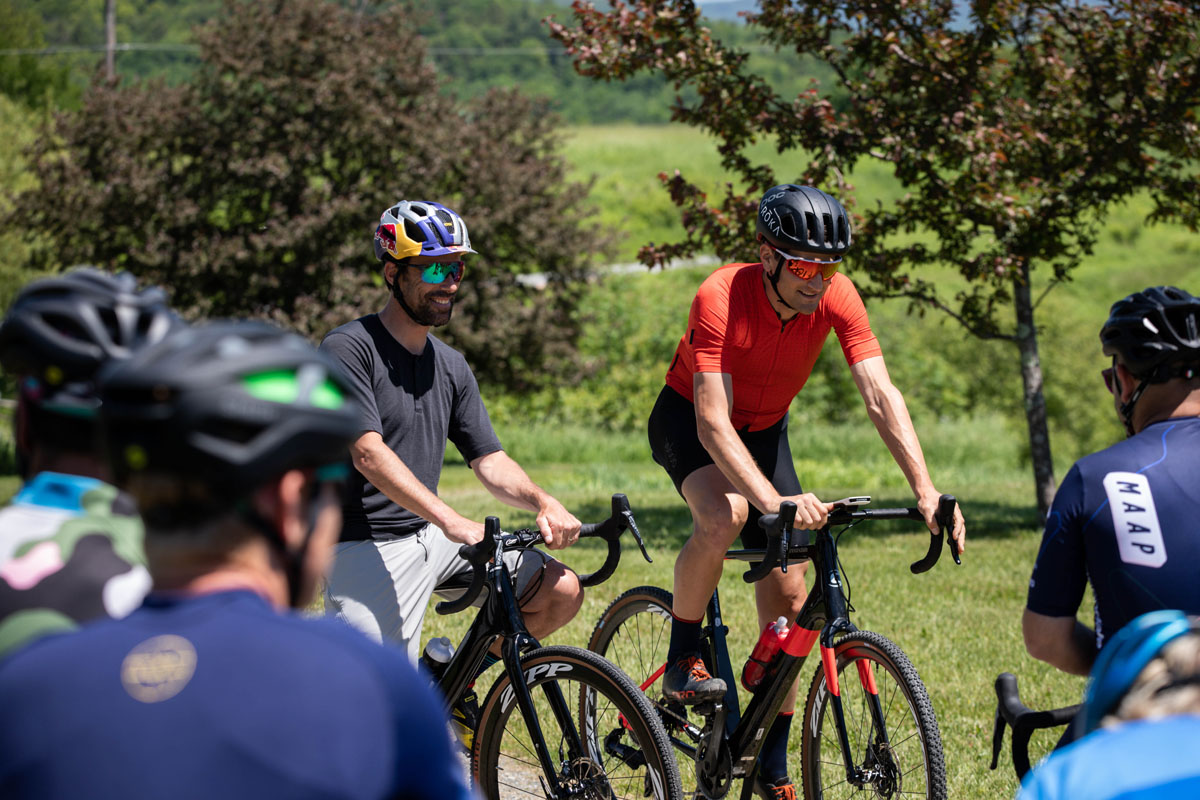
From the first pedal, it is immediately apparent that there is something special about the Topstone Carbon. It just feels… smooth. There’s no other way to put it, it just offers a ride quality that is uniquely different, in a good way. The suspension doesn’t actually feel like suspension which was the point. Instead, it takes the edge off while providing 10-12mm of travel at the rear axle and up to 30mm of compliance measured at the saddle. During my first, and only ride on the Topstone Carbon, this seemed like just enough give to make it feel like the suspension was doing something, without feeling like any of my energy was being lost to inefficiency in the suspension design.

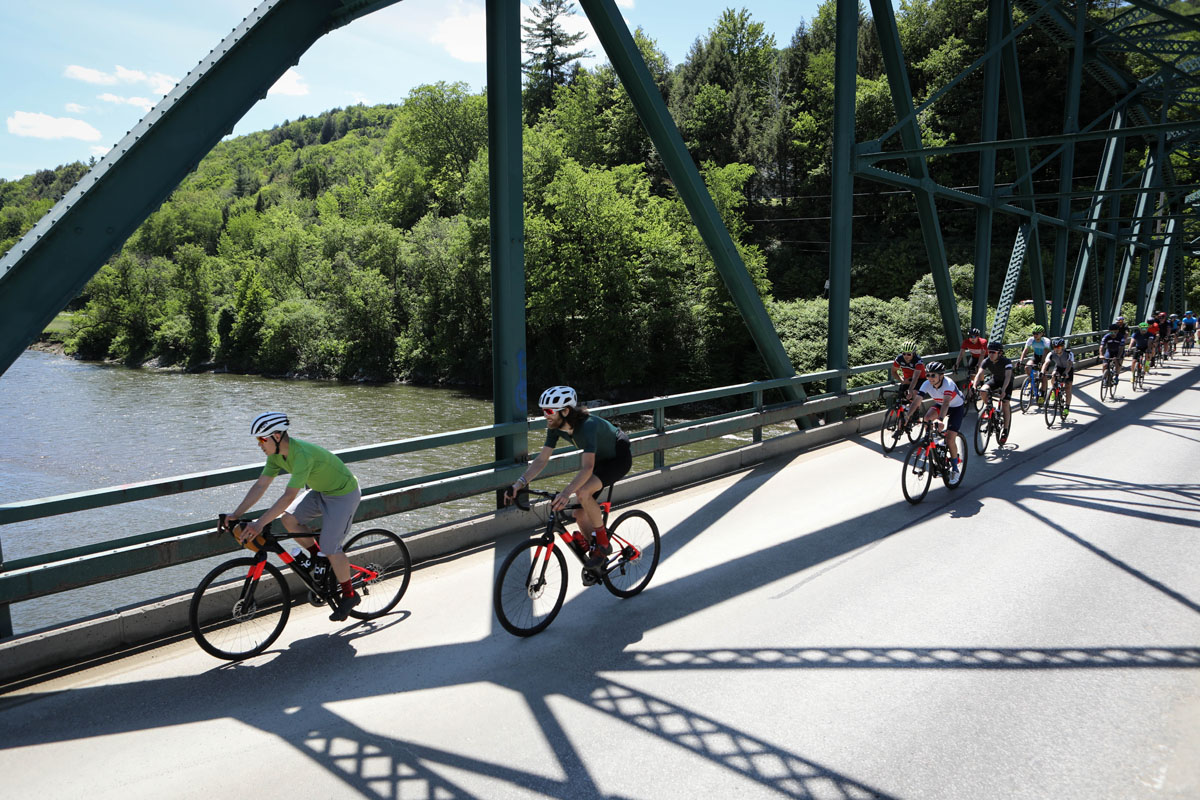
Without any sort of suspension up front, I expected there to be a more noticeable difference between the front and rear. Sure, large impacts still upset the front end more than if it had some sort of suspension up front, but I wasn’t left wishing that it had something more than the rigid fork up front. However, the gravel and dirt roads we rode in Vermont were pretty smooth – in fact the dirt roads were way smoother than the pavement! More aggressive terrain might have me thinking differently, but this is in line with how Cannondale has positioned the bike.
Aimed at more of a gravel/all-road platform, the Topstone Carbon is less of a singletrack shredder and more of an all day comfort machine. That isn’t to say that the Topstone Carbon can’t get rad – just that it’s aimed at being fast and smooth first.

That characteristic was apparent throughout the ride with the Topstone Carbon always feeling light and efficient. There were plenty of climbs to test out the bike both seated and standing, and both seemed to affirm Cannondale’s decision to go with a light, stiff, and efficient rear suspension design.
In terms of sizing, my 690mm saddle to BB measurement led me to the Small frame which has a 54.4cm top tube and 45.8cm seat tube. Compared to a lot of gravel bikes that I’ve ridden lately, the Topstone Carbon felt longer, with narrower bars – definitely more of a road oriented fit. Personally, I would like to run a shorter stem and wider bars than the 40cm bars that were included on the Small. On the Topstone Carbon Force eTap AXS that I rode this is made a bit more difficult due to the HollowGram SAVE semi-integrated bar and stem, but there are options for swapping the stem and bar. Or you can always swap the whole system completely for a standard bar and stem like those that come on all of the other complete Topstone Carbons.
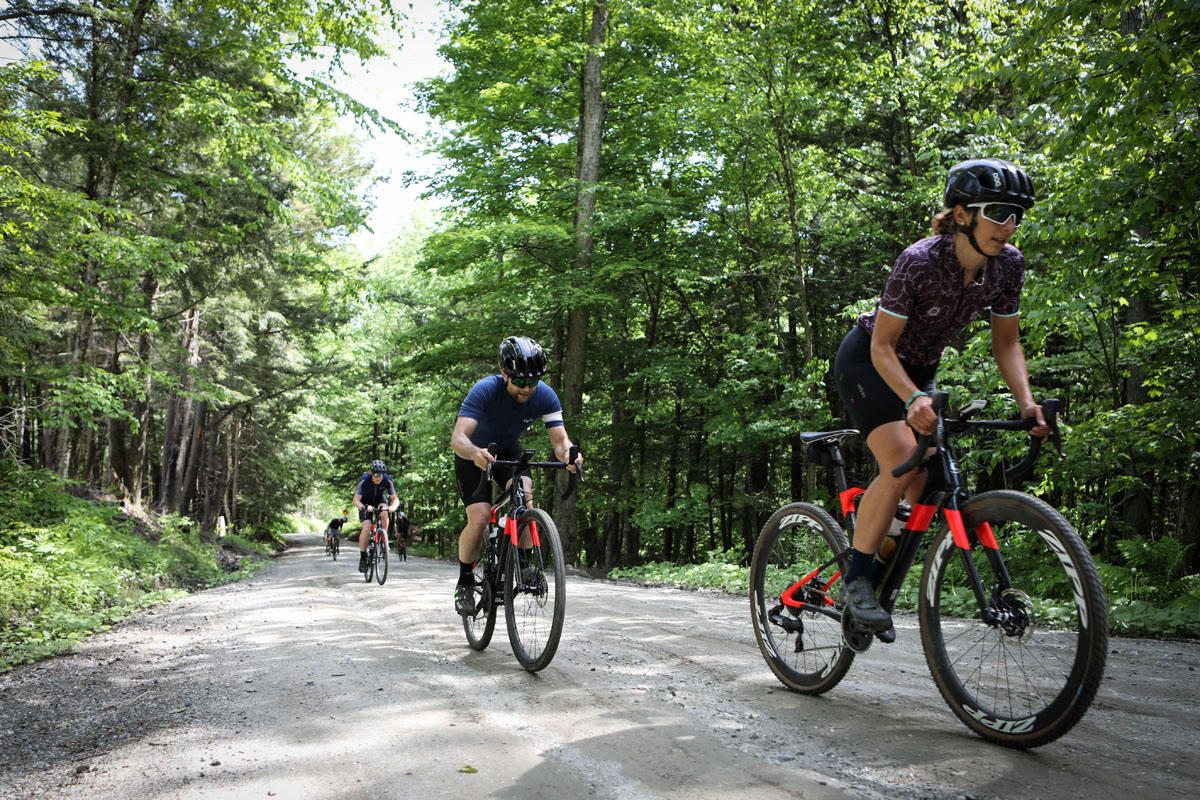
Overall, the first ride on the Topstone Carbon was impressive. Fit issues aside, the bike seems like a great addition to the Cannondale line up that rides smoother than the original Topstone alloy, yet is more efficient and faster than the Slate. This is one that I’m looking forward to getting some more time on in the near future.
